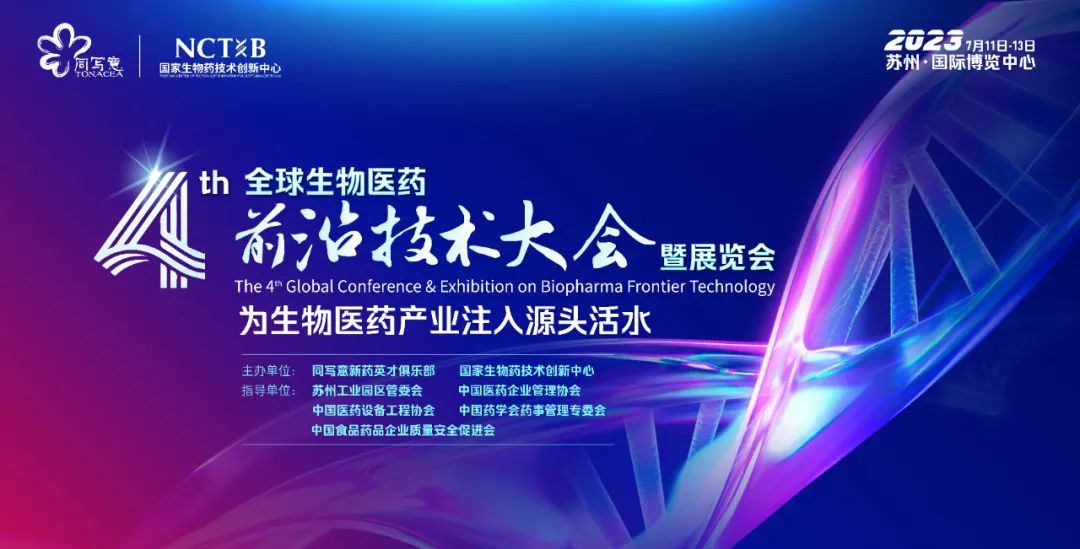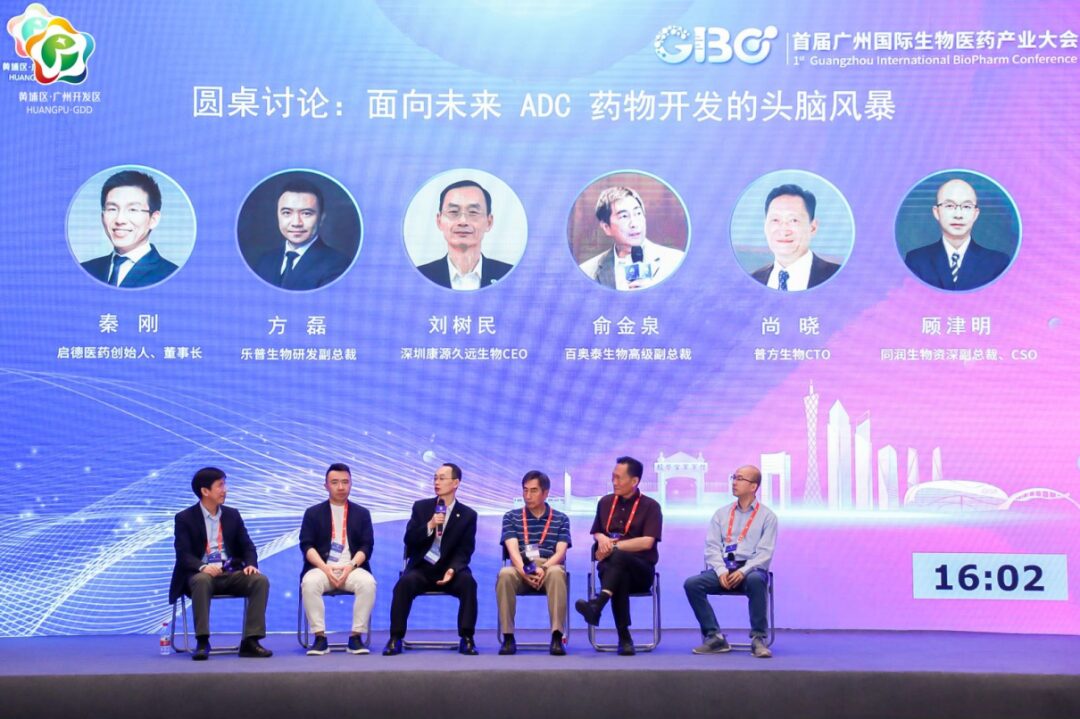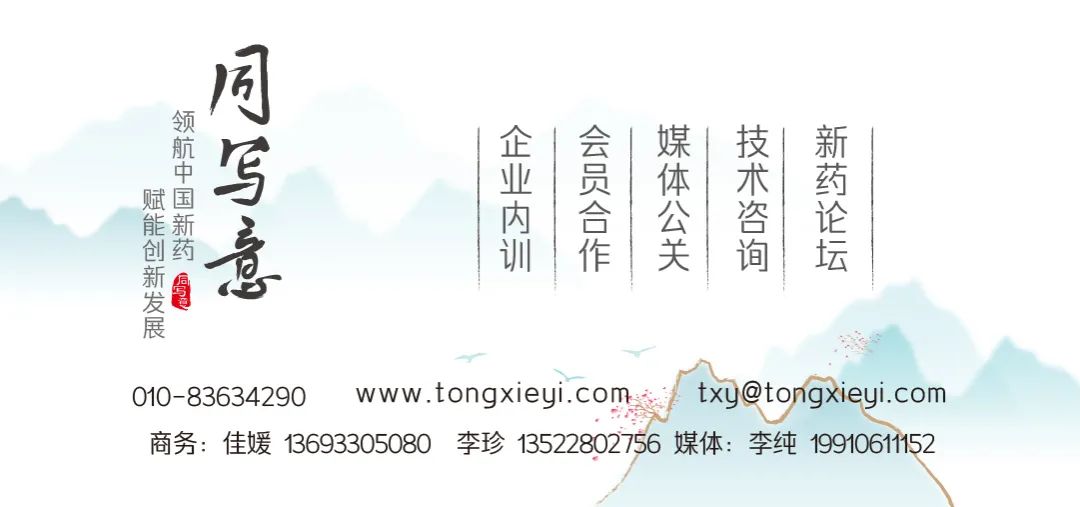

The story of the “magic bullet” ADC has clearly not reached its final chapter. With the advent of DS-8201, the global ADC market has become exceptionally vibrant, entering a period of rapid growth.
The market’s enthusiasm for ADCs is evident from the fierce competition among large pharmaceutical companies, who are almost “spending without limits”. In 2021, Seagen introduced vadastuximab talirine with a total transaction amount of $2.6 billion. In 2022, Merck spent nearly $10 billion to acquire seven ADC products from China. By the first half of this year, Pfizer made a $43 billion acquisition, showcasing the vast potential of the ADC market.
On the other hand, the role of local innovation is increasingly coming to the forefront. Companies like Rongchang Biologics, Kelun Pharmaceutical, and Lixin Pharmaceuticals, which hold ADC assets domestically, have quickly become prominent players.

Qin Gang (Moderator): Founder and Chairman of Qide Pharmaceuticals
Fang Lei: Vice President of R&D at Lepu Biopharma
Liu Shumin: CEO of Shenzhen Kangyuan Jiuyuan Biotech
Yu Jinqian: Senior Vice President of Baiyao Tai Biologics
Shang Xiao: CTO of Pufang Biotech
Gu Jinming: Senior Vice President and CSO of Tongrun Biotech

Qin Gang: DS-8201 was approved in China this February, and the recent launch event has shown us the expectations from doctors to patients. It is not just AstraZeneca; many domestic pharmaceutical companies are also laying out ADCs, creating a “blooming market”. However, with the entry of DS-8201, an ADC that has achieved commercial success overseas, what changes can we expect in the domestic market?
Fang Lei:The efficacy of DS-8201 is indeed excellent. However, I believe that the treatment landscape in China has its unique local characteristics, which also presents opportunities for other products. Lepu Biopharma is also developing HER2 ADCs, adopting differentiated indications. For instance, we target patients with liver metastasis who have developed resistance to existing HER2-targeted drugs and small molecule inhibitors, and we have found that our product performs notably well.
Therefore, in the face of DS-8201, we are currently focusing more on competing with differentiated indications. Lepu is also exploring the combination of ADCs with PD-1 therapy, which may help provide further clinical value.
Liu Shumin:For the past four to five years, or even earlier since DS-8201 entered clinical trials in 2015, relevant data has been continuously reported. As developers of ADCs, I believe we all pay special attention to its progress, including clinical Phase I, II, and comparisons with T-DM1. These data showcase the scientific community’s understanding of ADC development, and on this basis, DS-8201 serves as a benchmark. The core issue is how to surpass it or, even if you find it difficult to exceed, to identify the future clinical value of your own drug during its development.
Initially, we also used DS-8201 as a benchmark, as its data is indeed quite comprehensive. Of course, global data from other sources has also provided significant insights for understanding ADCs. We are developing our own PEG-structured bispecific ADC against this backdrop.
As Fang Lei mentioned, most of us in innovative drug development in Biotech cannot compete with big pharmaceutical companies like AstraZeneca, as we do not have the financial resources to do so. We need to find our clinical positioning. It seems quite challenging for most domestic companies to compare directly with DS-8201.
Qin Gang: Baiyao Tai is one of the earliest companies in China to develop HER2 ADCs, although there have been strategic adjustments along the way. In light of DS-8201’s launch, how does Yu Bo view its future commercialization prospects in China, and how can local players compete with their own strategies?
Yu Jinqian:Indeed, the clinical data of DS-8201 is impressive, expanding the indications for low-expressing breast cancer, leaving very little room for breast cancer treatment. Therefore, if we conduct research on breast cancer indications, we might face issues regarding CDE’s approval for non-inferiority studies compared to DS-8201. I believe the chances of achieving superior efficacy are slim, but if CDE allows non-inferiority studies, the advantage of domestic ADCs should be in pricing.
Secondly, DS-8201 has not been extensively studied in other tumors. As Fang Bo mentioned, we can pursue differentiation in other tumors with HER2 expression or low HER2 expression to find breakthroughs.
Moreover, since DS-8201 performs so well in breast cancer indications and is pushing into first-line treatment, it will eventually lead to resistance. In terms of addressing resistance, could domestic ADCs create new opportunities?
Qin Gang: Shang Bo’s presentation earlier showcased significant data, making us feel that Pufang has great potential. From your perspective, what characteristics can Pufang’s future products have in terms of differentiated competition?
Shang Xiao:From a technical standpoint, we are confident. This world evolves in such a way that latecomers will inevitably create better products than their predecessors; otherwise, we wouldn’t need to develop new drugs.
From a commercialization perspective, the previous speakers have articulated very well. I also believe the core is to avoid direct confrontation; on one hand, there is not much market left, and on the other hand, our capabilities may not allow it. Therefore, if you cannot produce sufficient superior efficacy data, you must consider avoiding direct competition and seeking opportunities in other indications.
Earlier, Yu Bo mentioned a very good point about using different mechanisms of action (MOA) in combination after resistance, but we do not know when this time will come, and we need data.
Qin Gang: Let’s hear Gu Bo’s opinion.
Gu Jinming:I feel that the current HER2 ADCs are somewhat like PD-1 a few years ago; the eventual commercialization in China’s market is likely to depend on each company’s capabilities in commercialization and sales. Currently, we see that Hengrui’s SHR-A1811 in clinical trials is at least not inferior to DS-8201, and it even has some advantages in terms of toxicity. I believe that with Hengrui’s commercialization capabilities and market sales capabilities, it is very likely to capture a significant market share in China.
Qin Gang: Commercialization capability is also crucial. Besides differentiating innovation in new drugs, a complete commercialization strategy is essential. We should delve deeper into this aspect. Currently, it is clear that DS-8201 hopes to occupy the market as much as possible after entering China, but from a pricing perspective, can domestic innovative drug companies achieve commercial competition through cost advantages?
Gu Jinming:This is a great question. My view is that ultimately a “price war” will ensue. Just look at how low the price of PD-1 can drop today; I believe that the price of HER2 ADCs will also drop very low, because they are all HER2 ADCs, and to occupy the market, price will definitely be a factor. Looking across various industries in China, there is generally a stage of price wars.
Qin Gang: There may also be another factor, which is that the quality of domestic ADCs is not inferior to DS-8201, but with price advantages, there is a possibility of adopting a rapid market penetration clinical development strategy, followed by achieving market equilibrium through off-label use. I believe there are many strategies. In other words, we need to pay attention not only to product positioning and our own differentiated technology but also to future commercialization strategies.

Qin Gang: Currently, the trend of ADCs going overseas has become a bright spot in Chinese innovative drugs, although we do not know how long it will last. I would like to ask each guest to discuss from their perspectives what has created the prosperous scene of domestic ADCs going overseas?
Gu Jinming:This is indeed an interesting phenomenon. This year, especially in recent months, many ADC projects have gone overseas. I believe there is a gap; that is, in 2012 and 2013, there was a wave of ADCs among MNCs, coinciding with the launch of new drugs. However, in the following years, the ADC trend waned as the industry found that many ADC targets failed in clinical trials, leading to a withdrawal from the ADC race by almost all MNCs.
In 2019, DS-8201, as a next-generation ADC, was launched, and its excellent clinical data attracted the attention of MNCs. At the same time, many ADC companies in China were making progress. MNCs, in order to fill this gap, began to acquire these projects from China.
Thus, the actual gap has allowed Chinese pharmaceutical companies to seize a temporal advantage. Whether this trend can continue in the future depends on the sustained innovation capabilities of Chinese pharmaceutical companies.
Qin Gang: Fang Bo previously provided an excellent analysis of the cooperation between ADCs and IO. From this perspective, how significant is the consideration of IO cooperation in the decisions of multinational pharmaceutical companies to purchase ADCs from China?
Fang Lei:I think it is a significant consideration, as evidenced by the previous collaborations disclosed by Merck and AstraZeneca. We have had extensive communication with AstraZeneca, and I believe that anyone who has been involved in IO has the experience of how to address the issue of “cold tumors”. ADCs now provide many methods, and the preclinical and clinical validations are already available.
It seems challenging to break through the response issues of cold tumors within the IO framework. I agree with Gu Bo’s viewpoint that the current leading companies in IO are strategically collaborating with ADCs.
In my view, the logic for MNCs is quite simple: if I have PD-1, I must look for ADCs; PD-1 is broad-spectrum, while ADCs target specific indications. For MNCs, if you have developed it, I need it and it is affordable.
Secondly, local companies are also performing well. What is the advantage? The R&D efficiency of Chinese companies is still very high, including preclinical follow-up and technical follow-up. I have always said that domestic small molecules and antibodies are performing well, which facilitates rapid clinical advancement. With more data and better results, there are certainly buyers willing to pay. Recent transactions involving Lixin are all preclinical projects, but because they are potential first-in-class, large companies are willing to pay.
In future platform validation, you either need to develop something very new, or if there are many competitors in the field, you must negotiate based on the highest efficiency, the fastest speed, and more clinical data, which will lead to smoother signing.
Shang Xiao:The sustainability of the ADC trend going overseas depends on whether Chinese ADC companies can maintain their innovation capabilities. Where does this innovation capability come from? One is the design of conjugation engineering, and the other is molecular aspects. Chinese chemists are actually not inferior to their Western counterparts. In terms of following or surpassing others, our capabilities are very strong. By adding this capability to ADCs, I believe we will be able to develop more products in the future.
In reality, whether in the US or Europe, it is quite normal for small companies to sell to large companies, but in China, this is not common. We rarely see companies like Bai Li selling projects to Hengrui or Kelun selling products to Hengrui. On one hand, you have products to sell; on the other hand, China must have its own digestion capacity. Therefore, I believe the trend of Chinese biotech products being sold to foreign MNCs will continue.
Liu Shumin:The overseas expansion of local pharmaceutical companies, especially the recent licensing of numerous ADC products, to some extent indicates that the R&D level of domestic companies is now comparable to that of foreign companies.
In fact, many people have returned to start businesses, and if you reflect on your experiences working abroad, you will find that many R&D heads of large foreign companies are actually our former colleagues. We are on the same cognitive level, and our R&D capabilities are quite similar.
From the perspective of business development and commercialization capabilities, this phenomenon may continue for a while. The next step to validate is clinical capability. This provides us with many insights into the clinical development of ADCs and other oncology drugs over the years, highlighting the importance of high doses and high toxicity. In the future, as domestic companies push ADCs into clinical trials, they must pay more attention to these aspects.

Qin Gang: Everyone present may hope that the enthusiasm for ADCs continues, but it certainly requires constant iteration and progress. Next, I would like each guest to outline what points Chinese biotech should focus on in the ADC field over the next three to five years to continuously strengthen the competitive edge they have accumulated and to consistently output high-quality innovative ADC products globally?
Fang Lei:Let me give you an example from our strategy. We hope that our first-wave ADC products can achieve clinical breakthroughs in combination with PD-1, leading to commercialization and overseas expansion. After achieving commercialization, we will invest more resources into subsequent R&D, aiming for breakthroughs in new targets and new solutions. Lepu is transitioning from having a relatively certain commercial product to gradually focusing on platform development and other target layouts. We anticipate further breakthroughs in our new targets next year.
Liu Shumin:We are developing next-generation bispecific ADCs to address the frequent issues we encounter. However, how far this new structure can go will rely more on clinical data for validation. Regardless, the essence of the question remains: we must innovate and find differentiation, but we also cannot pursue differentiation blindly; we must identify the clinical value we need to address.
Yu Jinqian:From the early concepts of cutting and non-cutting to the current observer effect of DS-8201, the development process of ADCs has exceeded 10 years. Before finding DS-8201, Daiichi Sankyo spent over a decade on this work, so major breakthroughs in pharmaceuticals require at least that level of effort.
There are many directions for ADCs, such as bispecific ADCs, adding immune activators, and so on. Each company can try different approaches. I hope that Chinese companies will delve deeper into ADC technology because we are still quite young compared to overseas ADC companies. We should calm down and work diligently, as significant effort is needed to achieve breakthroughs in the next wave of innovation.
Shang Xiao:Seeing the explosive growth now, I believe some companies will continue to thrive. After this situation arises, I agree with what was mentioned earlier: the next step is to work diligently. There can be many directions, including bispecifics, immune modulation, and substantial work can still be done on payloads. I remain very confident in China’s chemical capabilities.
Gu Jinming:DS-8201 is a very successful drug, but there is still significant room for improvement. Firstly, regarding toxicity, especially interstitial pneumonia. Secondly, nearly all patients develop resistance after using DS-8201, so we need to consider how the next generation of innovations can address resistance to DS-8201. For example, is it resistance at the target level? Is it resistance at the payload level? Especially as ADCs similar to DS-8201 are soon to enter clinical trials and obtain approvals, these drugs will also develop resistance. Therefore, I believe addressing resistance will represent a substantial market opportunity.
Qin Gang:Let me summarize the guests’ insights about the future.
There is a fundamental principle: through our innovations, we aim to transform cancer treatment into a manageable chronic condition, which is the ultimate goal. We face numerous unmet needs, including resistance issues, and many patients treated with various therapies still experience rapid disease progression. How to achieve effective long-term control of tumors through innovative therapies—without necessarily eliminating them completely, but allowing for long-term coexistence—is also a crucial starting point for developing ADCs and other types of drugs.
Of course, we must not forget the specific unmet clinical needs that remain far from being satisfied, even if their markets are not large. However, these patients have no effective therapies available, and that is something we must closely monitor. By focusing on these two dimensions, we can ultimately achieve fruitful results.
[First Guangzhou International Biopharmaceutical Industry Conference]
Related Articles Recommended
● On-site | Three years in sequence, by the Taihu Lake, discussing “Innovation and Openness, Smart Health”
● On-site | Building a Strong Industrial Chain in the Bay Area, Co-creating a New Pattern for Guangzhou’s Pharmaceuticals
● On-site | Six Forums Focus on Frontier Biopharmaceuticals, First Guangzhou International Biopharmaceutical Industry Conference Concludes
● Guangdong-Hong Kong-Macao Pharmaceutical and Medical Devices Communication: Actively Promoting Real-World Research of Drugs and Medical Devices; Actively Promoting Innovative Drugs and Medical Devices into Hospitals
